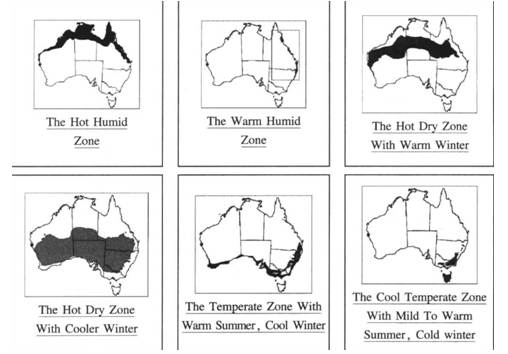题目内容
British Columbia is the third largest Canadian provinces,both in area and population. It is nearly 1. 5 times as large as Texas,and 1 800 miles (1,280km) north from the United States border. It includes Canada's entire west coast and the islands just 2 the coast.
Most of British Columbia is mountainous,with long rugged ranges 3 north and south. Even the coastal islands are the 4 of a mountain range that existed thousands of years ago. During the last Ice Age,this range was scoured by glaciers until most of 5 was 6 the sea. Its peaks now show as islands 7 along the coast.
The southwestern coastal region has a humid mild marine 8 . Sea winds that blow in?land from the west are warmed by a current of warm water that flows 9 the Pacific Ocean. As a result,winter temperatures average above 10 and summers are mild. These warm western winds also carry 11 from the ocean.
Inland from the coast,the winds from the Pacific 12 the mountain barriers of the coast?al ranges and the Rocky Mountains. As they 13 to cross the mountains,the winds are cooled,and their moisture begins to fall as 14 ,On some of the western slopes almost 200 inches (500cm) of rain fall each year.
More than half of British Columbia is 15 forested. On mountain slopes that receive plentiful rainfall,huge Douglas firs rise in towering columns. These 16 giants often grow to be as much as 300 feet (90m) tall,17 diameters up to 10 feet (3m) . More lumber is 18 from these trees than from any other kind of trees in North 19 . Hemlock,red cedar,and balsam fir are among the other trees 20 in British Columbia.
( ) 1. A. spreads B. increases C. extends D. continues
( ) 2. A. away B. of C. off D. from
( ) 3. A. flying B. coming C. running D. returning
( ) 4. A. ruins B. survivals C. relics D. remains
( ) 5. A. it B. that C. this D. which
( ) 6. A. at B. on C. over D. beneath
( ) 7. A. spread B. scattered C. distributed D. separated
( ) 8. A. environment B. climate C. temperature D. situation
( ) 9. A. through B. in C. across D. within
( ) 10. A. point B. icy C. cold D. freezing
( ) 11. A. vapour B. moisture C. wetness D. mixture
( ) 12. A. face B. contact C. meet D. encounter
( ) 13. A. rise B. climb C. raise D. lift
( ) 14. A. rain B. snow C. wind D. rainfall
( ) 15. A. weightily B. forcefully C. deeply D. heavily
( ) 16. A. land B. ocean C. forest D. mountain
( ) 17. A. with B. of C. within D. from
( ) 18. A. harvested B. produced C. created D. invented
( ) 19. A. Africa B. Asia C. Antarctica D. America
( ) 20. A. detected B. found C. disclosed D. located
CCCDA DBBAD BCAAD CABDB
英属哥伦比亚省(British Columbia又译为"不列颠哥伦比亚省") 在加拿大华人社区中又被称为卑斯省。这里由于西风和太平洋暖风的影响,气候较为温和,冬季潮湿,夏季较热。北部的冬季漫长而且寒冷,夏季较短暂而且凉爽,降雨量适中。
1. C extend尤其是指(在长度、面积、范围等方面) 增加,增大,扩大,变长;而spread则强调伸开,展开,摊开和传播等。
2. C 固定用法。 off the coast离海岸不远。
3. C此处山脉的走向只能用答案 C.
4. D本句的意思是"甚至沿海的一些岛屿都是数千年来山脉走向的遗迹";而A是"废墟";B是"幸存者";C是"遗产,遗址",均不符合此处的句意需要。
5. A不定代词it指前面提到的山脉。
6. D与下一空有照应,由"只有顶端露在海面上"可知答案应选 D.
7. B spread传播,展开,散布;distributed分配,散发,分布;separated分开,分隔。
8. B与前面"温和的海洋气候"有关联。
10. D freezing特指"冰点或凝结点"。
11. B vapor也有水汽的意思,但主要指水蒸汽;而moisture强调水汽和潮气;wetness是"湿或潮湿";mixture则是"混合物"。而且后文还有此类用法,可作提示。
12. C meet:普通用词,指双方或多方从不同方向或相反方向做相对运动,最终相碰(遇) 。 encounter:通常指遇到困难或挫折,也指偶然或意外地相遇。 face:侧重双方静止地面对面,或指充满勇气、信心和决心去正视人或事。 contact:多指通过书信、电话或直接会面和别人联系,口语用词。
13. A rise是普通用词,指具体的或抽象的事物由低向高移动。 raise是及物动词,常用词,多指把某物从低处升到高处,有时作引申用;lift语气比raise强,指用体力或机械的力举起或抬起某物。
14. A湿气最后以雨的形式落下来。
16. C从下文"长到300多英尺髙"可知是指树木。
18. B create:侧重创造出来的东西以前并不存在,或者指独具特色的创作。
invent:主要用于科技领域,指通过思考、研究或实验制造出新的前所未有、极为有用的东西。
pro?duce:指产品的生产,或作品创作的完成。
20. B discover;指发现本来已经存在,后被人认识的事物、真理或情况。
find:普通用词,可指偶然发现,也可指经过寻找后得到或重新获得已失去的东西。强调动作的结果。 detect:正式用词,强调经过周密观察或研究而有所获得和发现,尤指发现有意隐藏之物。

 阅读快车系列答案
阅读快车系列答案